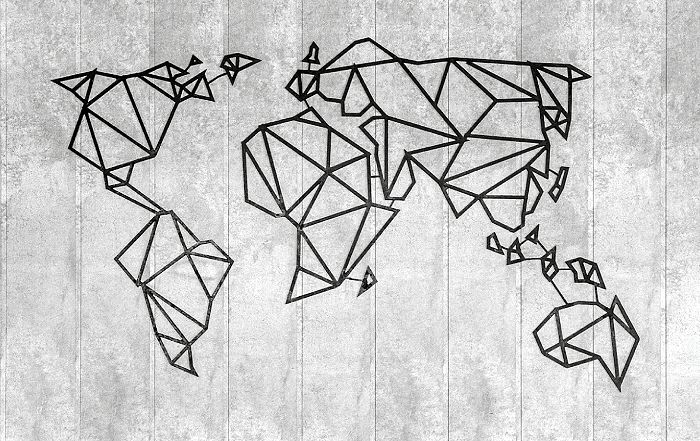Over the past decade, Asia has rapidly emerged as the global epicenter of financial technology innovation. From the bustling hubs of Singapore and Hong Kong to the dynamic markets of India, China, and South Korea, fintech startups are redefining how consumers, businesses, and governments engage with financial services. What once began as a series of isolated innovations in mobile payments and digital banking has evolved into a vast, interconnected ecosystem that now underpins nearly every aspect of the region’s financial infrastructure. As of 2025, Asia is home to more fintech unicorns than any other continent, reflecting both the depth of its innovation and the diversity of its financial needs.
The rise of fintech startups in Asia’s financial centers is not merely a story of digital transformation; it is a powerful narrative of economic empowerment, regulatory adaptation, and technological mastery. These startups are bridging the gap between traditional banking institutions and the digital-first generation of consumers who demand speed, transparency, and inclusion. Platforms like Ant Group, Grab Financial Group, and Paytm have redefined what financial access means, while thousands of smaller innovators continue to reshape investment management, insurance, cross-border payments, and lending ecosystems.
Asia’s fintech ascendancy has also become a key driver of employment, investment, and cross-border collaboration. Learn more about evolving banking and digital finance systems and their global implications.
The Catalysts Behind Asia’s Fintech Boom
The explosive growth of fintech startups in Asia can be attributed to a confluence of factors that extend beyond technology itself. The region’s demographics, digital penetration, regulatory frameworks, and entrepreneurial culture all play defining roles.
Demographics and Digital Connectivity
Asia’s population represents more than 60% of the global total, and the median age in many of its economies remains under 35. This youthful demographic, coupled with one of the fastest smartphone adoption rates in the world, has created a massive digitally native user base. Platforms such as WeChat Pay, Gojek’s GoPay, and Alipay seamlessly integrate finance into social and commercial ecosystems, turning everyday interactions into financial transactions. According to Statista, more than 2.5 billion Asians now use some form of digital wallet, marking a cultural shift toward cashless economies.
This digital shift has encouraged entrepreneurs to think beyond conventional financial services. In markets like Indonesia and Vietnam, fintech startups are driving financial inclusion by reaching the unbanked and underbanked populations through mobile-first platforms. Read more about regional business growth and innovation trends that are shaping this transformation.
Regulatory Evolution and Financial Liberalization
Asia’s fintech expansion would not have been possible without regulatory adaptability. Governments across the region have recognized the strategic importance of financial innovation and have taken proactive measures to support it. Singapore’s Monetary Authority of Singapore (MAS) pioneered the concept of regulatory sandboxes, providing startups with controlled environments to test financial solutions without facing full regulatory compliance burdens from day one. Similarly, Hong Kong’s Fintech Supervisory Sandbox and Japan’s Financial Services Agency (FSA) frameworks have been instrumental in accelerating time-to-market for financial innovations.
These regulatory initiatives have inspired collaboration between governments and the private sector, creating an ecosystem of trust and experimentation. The establishment of digital bank licenses in Malaysia, Philippines, and Thailand further demonstrates the region’s commitment to fostering competition and inclusivity. Entrepreneurs can explore more insights about evolving economic regulations and digital finance.
The Role of Cross-Border Investment and Venture Capital
Venture capital investment has flowed abundantly into Asia’s fintech scene. According to CB Insights, Asian fintech startups attracted over $20 billion in funding during 2024 alone, driven by both domestic investors and global funds from the United States, Europe, and the Middle East. Major players like Sequoia Capital, SoftBank Vision Fund, and Tiger Global Management have aggressively backed fintech disruptors ranging from payment processors to blockchain platforms.
These investments have not only provided capital but also international expertise, propelling startups into regional and global markets. The cross-border nature of fintech funding has blurred traditional geographical boundaries, allowing emerging companies in India or Vietnam to partner with financial institutions in Japan or Singapore seamlessly. Such integration supports the broader goal of creating an interconnected digital economy throughout Asia.
Learn more about current investment opportunities and venture funding landscapes that are influencing Asia’s fintech evolution.
Fintech Hubs of Asia: Powerhouses of Innovation
While fintech activity spans the entire continent, a few cities have emerged as dominant centers that anchor Asia’s digital finance revolution.
Singapore: The Innovation Incubator
Singapore stands as the crown jewel of Asia’s fintech ecosystem. Its strong regulatory environment, low taxation, and global financial connectivity make it an ideal base for startups targeting both Asian and Western markets. The annual Singapore Fintech Festival, organized by MAS, attracts innovators from around the world and has become the largest fintech event globally. Singapore’s open data policies and thriving ecosystem of accelerators, including Startupbootcamp FinTech and Elevandi, further nurture entrepreneurship.
Moreover, the nation’s commitment to sustainability and green finance has encouraged startups to explore ESG-focused financial solutions, aligning with Singapore’s Green Plan 2030. Fintech players here are not only building for profit but for long-term economic resilience. Entrepreneurs can explore parallel insights on sustainable finance and digital transformation.
Hong Kong: Gateway Between East and West
Hong Kong retains its historical status as a bridge between Western capital and Asian markets. Despite recent geopolitical and economic headwinds, it continues to host one of the most advanced fintech infrastructures in the region. Its proximity to Shenzhen—a hub of technological innovation—has created unique cross-border synergies. Companies like ZA Bank and WeLab Bank are leading examples of virtual banks that emerged from Hong Kong’s regulatory modernization efforts.
The city’s fintech sector has also expanded into digital wealth management, trade finance, and blockchain infrastructure. Hong Kong Exchanges and Clearing Limited (HKEX) has invested heavily in distributed ledger technologies to improve transparency and reduce settlement times. Learn more about financial innovation in global markets and its impact on international trade.
China: A Digital Finance Superpower
No discussion of fintech in Asia would be complete without China, whose domestic fintech ecosystem remains unparalleled in both scale and sophistication. The country’s super-app model, pioneered by Alibaba Group and Tencent, integrates payments, loans, insurance, and investments into unified platforms used by hundreds of millions daily. Despite increased regulatory scrutiny since 2021, China’s fintech sector continues to thrive, focusing now on compliance-driven growth, AI-enabled credit scoring, and digital currency innovation.
The Digital Yuan, developed by the People’s Bank of China, represents one of the world’s first large-scale central bank digital currencies (CBDCs). Its rollout across multiple provinces and in international trade experiments showcases China’s ambition to shape the future of money. Entrepreneurs can find related insights on AI-driven finance and blockchain’s role in modern economies.
India: Democratizing Financial Access
India’s fintech story is defined by scale, inclusivity, and infrastructure-led innovation. The Unified Payments Interface (UPI) has transformed the nation’s digital economy, enabling over 10 billion transactions per month. Startups such as Razorpay, Zerodha, and PhonePe are rewriting the financial rules by merging affordability with accessibility. India’s government-led initiatives like Aadhaar, Jan Dhan Yojana, and India Stack have created a robust digital foundation that fuels fintech expansion into both rural and urban areas.
India’s strength lies in its ability to combine innovation with financial literacy. Programs that educate small businesses and individuals on digital payments have led to a surge in micro-entrepreneurship. This social transformation highlights the broader link between fintech innovation and employment creation. Discover further insights about the changing employment and startup ecosystems shaping the global financial workforce.
South Korea and Japan: High-Tech Precision Meets Financial Sophistication
South Korea and Japan have approached fintech from a technology-first perspective, focusing on integrating artificial intelligence, cybersecurity, and big data into traditional financial models. Seoul’s Digital New Deal policy has positioned fintech as a pillar of national competitiveness, while Tokyo continues to lead in fintech research and regulatory clarity. Companies such as KakaoBank, Toss, and LINE Bank have become household names, leveraging the strong tech culture and high consumer trust in digital systems.
The integration of biometric authentication, AI-based credit analysis, and smart-contract automation demonstrates how East Asia’s advanced economies are pushing the boundaries of fintech reliability and efficiency. Entrepreneurs can explore more about the fusion of technology and business innovation across global markets.
🌏 Asia's Fintech Innovation Centers
Interactive Map: Explore Leading Fintech Hubs Across Asia
Singapore
Hong Kong
China
India
South Korea
Japan
🦁 Singapore: The Crown Jewel
Singapore stands as Asia's premier fintech hub, combining regulatory excellence with global connectivity.
- Home to the world's largest fintech event - Singapore Fintech Festival
- Pioneer of regulatory sandbox frameworks via MAS
- Strong focus on green finance and ESG solutions aligned with Green Plan 2030
- Low taxation and robust digital infrastructure attract global startups
🏙️ Hong Kong: Bridge to Global Markets
Hong Kong maintains its position as a vital connector between Western capital and Asian innovation.
- Leading virtual banks: ZA Bank, WeLab Bank, Livi Bank
- Strategic proximity to Shenzhen technology hub creates cross-border synergies
- Advanced blockchain infrastructure via HKEX initiatives
- Strong focus on digital wealth management and trade finance
🐉 China: Unparalleled Scale & Innovation
China's fintech ecosystem leads in scale and sophistication, pioneering the super-app model.
- Super-app integration by Alibaba (Alipay) and Tencent (WeChat Pay)
- Digital Yuan: World's first large-scale central bank digital currency
- AI-enabled credit scoring serving hundreds of millions daily
- Compliance-driven growth with advanced regulatory framework
🇮🇳 India: Democratizing Finance
India's fintech revolution prioritizes scale, inclusivity, and infrastructure-led innovation.
- UPI system processes 10+ billion transactions monthly
- Leading startups: Razorpay, Zerodha, PhonePe, Paytm
- Government initiatives: Aadhaar, Jan Dhan Yojana, India Stack
- Financial literacy programs driving micro-entrepreneurship
🇰🇷 South Korea: High-Tech Excellence
South Korea approaches fintech with technology-first precision and national competitiveness.
- Leading digital banks: KakaoBank, Toss, K Bank
- Digital New Deal policy positions fintech as national priority
- Advanced biometric authentication and AI credit analysis
- Strong consumer trust in digital financial systems
🇯🇵 Japan: Research & Regulatory Leadership
Japan combines sophisticated financial markets with cutting-edge research and regulatory clarity.
- Financial Services Agency (FSA) provides clear regulatory frameworks
- Leading in fintech research and quantum-safe encryption
- Strong emphasis on cybersecurity and data protection
- Collaboration between traditional banks and fintech innovators
The Transformation of Financial Ecosystems
The rise of fintech startups across Asia’s financial centers has profoundly transformed traditional financial ecosystems, influencing everything from retail banking to cross-border investments. The fintech revolution is not only redefining access to capital but also restructuring the underlying architecture of financial systems. It represents a shift away from centralized control toward a more agile, data-driven, and customer-centric model of finance that aligns with global trends in digital transformation.
The Reinvention of Banking Models
Traditional banks in Asia have been forced to evolve rapidly in response to fintech disruption. Many established financial institutions, including DBS Bank, OCBC, and HSBC Asia-Pacific, have launched their own digital arms or invested heavily in startups to maintain competitiveness. DBS Bank, for example, was one of the first in the world to fully digitize its operations, integrating APIs and artificial intelligence to deliver seamless digital banking experiences.
This convergence between fintech startups and established banks is shaping a hybrid model known as “embedded finance.” In this model, banking functions are integrated directly into non-financial platforms, allowing consumers to access credit, payments, or insurance through e-commerce, travel, and social media applications. For instance, platforms like ShopeePay, Tokopedia, and GrabPay have integrated micro-lending, investment, and savings products directly into their ecosystems, blurring the lines between financial and non-financial sectors.
This transition underscores the critical role of technology in modern finance. Read more about how AI and automation are reshaping global business operations and influencing the next generation of financial services.
Cross-Border Payments and Regional Financial Integration
One of the most transformative areas in Asian fintech has been cross-border payments. Historically, international money transfers were slow and costly, dominated by intermediaries like SWIFT and Western Union. Today, fintech startups have replaced these legacy systems with blockchain-based and API-driven solutions that enable real-time settlements and minimal transaction fees.
Companies such as Nium in Singapore and Wise (formerly TransferWise) have developed infrastructure that supports direct transfers between regional banking systems. Moreover, the ASEAN Payment Connectivity Initiative—linking payment networks between Thailand, Malaysia, Singapore, and Indonesia—demonstrates Asia’s leadership in cross-border financial collaboration.
Blockchain technologies are at the core of this evolution. The adoption of distributed ledgers enables transparency, security, and traceability in international payments, making it easier for small and medium-sized enterprises (SMEs) to participate in global trade. Learn more about regional developments in crypto and blockchain markets that are redefining financial interoperability.
The Rise of Digital Banking Licenses
Asia’s policymakers have introduced new licensing frameworks for digital-only banks, accelerating innovation and competition. Singapore granted digital banking licenses to Grab-Singtel, Ant Group, and Green Link Digital Bank, signaling a shift toward an open and dynamic financial market. Similarly, Hong Kong’s Monetary Authority (HKMA) has licensed several virtual banks, including WeLab Bank, ZA Bank, and Livi Bank, each targeting niche segments of the population with tailored digital offerings.
In the Philippines, Tonik Bank and Maya Bank have led the digital banking charge by offering entirely app-based experiences designed for financial inclusivity. In Malaysia, new digital entrants like GX Bank are building sustainable models that blend consumer finance with environmental and social impact objectives.
These developments not only democratize access to financial services but also enhance resilience within the banking ecosystem. By reducing reliance on physical infrastructure and embracing real-time analytics, digital banks are creating leaner, smarter, and more inclusive systems of finance. Entrepreneurs and investors can explore more on banking innovation and modernization trends shaping Asia’s fintech evolution.
Startup Strategies and Competitive Differentiation
The sheer diversity of fintech startups in Asia reflects a region-wide culture of experimentation. While each market faces unique challenges—ranging from regulatory differences to cultural preferences—the most successful fintech startups share a few defining strategies that enable sustained growth.
Data as a Strategic Asset
Fintech firms in Asia leverage data as the foundation of their competitive advantage. By analyzing millions of digital transactions, startups can generate predictive insights into consumer behavior, creditworthiness, and risk management. Ant Group’s Zhima Credit and Tala in the Philippines have pioneered alternative credit scoring systems that use mobile data, social interactions, and payment histories to evaluate users without traditional credit records.
These data-driven innovations are particularly significant in emerging economies, where traditional credit bureaus are either underdeveloped or inaccessible. Through artificial intelligence and big data analytics, fintech companies are building trust where conventional systems have failed, creating a parallel form of financial identity. To understand the broader technological landscape, visit technology and innovation insights.
Ecosystem Collaboration and Open Banking
Open banking is transforming how fintech startups interact with incumbent financial institutions. By allowing secure data sharing through APIs, startups can develop new services that integrate seamlessly with existing financial infrastructure. This collaboration has fueled partnerships across the region, where banks offer regulatory expertise while startups provide agility and technological depth.
In Singapore, the API Exchange (APIX), supported by the Monetary Authority of Singapore and the World Bank’s International Finance Corporation, connects over a thousand fintech firms and financial institutions across Asia. Similarly, Japan’s FSA Open API policy has encouraged collaboration between fintechs and traditional banks, enhancing consumer access to personalized financial tools.
The open banking trend is also extending to wealth management, where robo-advisory platforms such as StashAway and Endowus are integrating with major financial institutions to deliver sophisticated yet accessible investment options. Learn more about financial and investment trends across Asia’s markets.
Embedded Finance and Lifestyle Integration
One of the defining features of Asia’s fintech landscape is its ability to blend finance with daily lifestyle needs. Rather than existing as standalone products, fintech services are embedded into platforms for e-commerce, transportation, and entertainment. This approach not only increases adoption but also generates multiple revenue streams across sectors.
Grab Financial Group, for example, transformed from a ride-hailing company into a regional financial powerhouse by embedding lending, insurance, and wealth management within its super-app ecosystem. Similarly, Sea Group’s ShopeePay and GoTo’s GoPay demonstrate how payment systems can evolve into multi-functional financial ecosystems serving both consumers and merchants.
This integration illustrates the concept of “everyday finance,” where financial tools become as accessible as messaging apps. The growing interconnection between fintech and lifestyle also signals a broader cultural shift—finance is no longer a distant service but an integral part of daily convenience. Explore more about business and lifestyle trends shaping consumer finance behavior in Asia.
Cross-Border Collaboration and Regional Integration
Asia’s fintech revolution is increasingly characterized by collaboration across national and sectoral boundaries. The integration of digital banking systems, data frameworks, and payment rails is fostering a new form of economic interdependence across the region.
Regional Fintech Alliances and Trade Connectivity
The establishment of regional fintech alliances has helped synchronize regulations and foster shared innovation. Initiatives like the ASEAN Fintech Network and Asia-Pacific Financial Forum (APFF) promote regulatory consistency, cybersecurity cooperation, and cross-border payment interoperability. These alliances also create fertile ground for startups to scale beyond domestic markets without facing prohibitive regulatory hurdles.
Singapore and Indonesia have partnered on real-time cross-border QR payment systems, allowing consumers to pay merchants across both nations using their local wallets. Meanwhile, Japan and Thailand’s collaboration on blockchain-based trade finance demonstrates the continent’s commitment to technological synergy in regional commerce.
This cooperation underscores Asia’s growing influence on the future of financial connectivity. The continent is no longer following Western fintech trends—it is setting them. Learn more about global business and world economy developments.
Blockchain, Digital Currencies, and the Future of Payments
Blockchain technology continues to be the backbone of fintech innovation in Asia. Beyond cryptocurrency speculation, the focus has shifted toward practical applications such as smart contracts, decentralized finance (DeFi), and tokenized assets. Financial authorities in Singapore, Japan, and Hong Kong are actively exploring the potential of central bank digital currencies (CBDCs) to enhance transaction transparency and speed.
China’s Digital Yuan has already been deployed in retail transactions, cross-border pilots, and smart city initiatives, setting a precedent for the future of programmable money. In Singapore, Project Ubin, led by the Monetary Authority of Singapore, successfully tested multi-currency payments on blockchain platforms in collaboration with major banks like JP Morgan and DBS.
Blockchain’s potential to reduce settlement risks, streamline compliance, and empower decentralized financial ecosystems is increasingly evident. Entrepreneurs seeking to understand emerging crypto-financial opportunities can explore more insights on crypto innovation and digital assets.
Employment, Sustainability, and the Social Impact of Fintech
As fintech continues to expand across Asia’s major financial centers, its impact extends well beyond the realm of finance. It is reshaping employment models, redefining sustainability in economic growth, and empowering millions through financial inclusion. The convergence of digital technology and financial innovation is altering how societies generate income, how governments regulate, and how citizens participate in the global economy.
Fintech’s Role in Job Creation and Workforce Transformation
The growth of fintech in Asia has given rise to entirely new professional categories. Beyond software developers and data scientists, there is an increasing demand for specialists in compliance, digital risk assessment, customer analytics, and cybersecurity. Startups and financial institutions alike are now recruiting multidisciplinary teams that combine financial acumen with technological fluency.
According to LinkedIn’s 2025 Jobs on the Rise report, fintech-related roles—particularly those tied to blockchain development, digital banking operations, and AI analytics—are among the fastest-growing job segments in Singapore, India, and Hong Kong. As financial systems modernize, the workforce must continuously upskill to meet the demands of automation and algorithmic decision-making.
Governments are also taking an active role in this workforce transformation. Singapore’s SkillsFuture initiative and Malaysia’s MyDigital Blueprint both include programs designed to prepare citizens for fintech-related roles, ensuring that national workforces remain competitive. Similarly, India’s National Skill Development Corporation (NSDC) has launched partnerships with private fintech companies to train millions in financial technology literacy.
This rise in fintech employment is part of a broader trend of economic empowerment, particularly among younger populations. The ability to build, manage, and scale fintech solutions has turned technology entrepreneurship into one of the most sought-after career paths in Asia. To explore how fintech continues to influence workforce trends, visit employment and future jobs insights.
Financial Inclusion and Social Transformation
Perhaps the most profound impact of fintech startups in Asia lies in financial inclusion. For decades, hundreds of millions of people across the continent lacked access to formal financial services. Fintech has reversed this trend by delivering affordable, mobile-first solutions to underserved communities.
In Indonesia, platforms like KoinWorks and Akulaku enable micro-entrepreneurs to access small loans that would otherwise be unavailable through traditional banks. In Bangladesh, bKash has become a symbol of inclusive growth, empowering rural populations to participate in the formal economy via simple mobile transactions. Meanwhile, India’s Paytm and PhonePe have played a transformative role in democratizing digital payments across both metropolitan and rural landscapes.
The cumulative effect of these efforts is a new economic narrative—one that celebrates participation and empowerment. Women entrepreneurs, small business owners, and rural farmers now form the backbone of Asia’s emerging digital economy. By providing access to microcredit, insurance, and savings tools, fintech startups are helping break the cycle of poverty and dependency.
This inclusive vision resonates with broader sustainable development goals. Learn more about sustainable and responsible business practices that align economic growth with social well-being.
ESG, Green Finance, and Sustainable Investment
Environmental, Social, and Governance (ESG) principles have moved to the center of Asia’s financial agenda. Fintech startups are uniquely positioned to advance sustainability through data-driven insights, transparent reporting tools, and green finance products. Singapore, Hong Kong, and Japan have introduced frameworks that encourage banks and investors to fund climate-conscious projects, while fintech innovators are leveraging these frameworks to develop carbon-tracking platforms and digital green bonds.
For example, Hong Kong’s Green FinTech platform uses blockchain technology to verify the environmental impact of investments, providing institutional investors with reliable sustainability metrics. Similarly, Singapore’s Project Greenprint, spearheaded by the Monetary Authority of Singapore, aims to use fintech solutions to integrate ESG data across industries.
Investors are increasingly directing capital toward sustainable fintech ventures that promote clean energy, waste reduction, and responsible consumption. This alignment of finance and sustainability is redefining how success is measured—not just in terms of profit, but also in long-term planetary impact. Entrepreneurs interested in the intersection of innovation and responsible investing can explore more about global investment trends.
Gender Equity and Diversity in Fintech Leadership
Asia’s fintech revolution has also created new pathways for gender equity and diversity in leadership. While the technology and finance industries have traditionally been male-dominated, a new generation of women entrepreneurs, executives, and engineers are emerging at the forefront of fintech.
In India, Upasana Taku, co-founder of MobiKwik, has championed financial inclusion through technology accessible to women in semi-urban and rural areas. In Singapore, Sopnendu Mohanty, the Chief Fintech Officer at MAS, has actively promoted female participation in fintech innovation programs and accelerators. Across Japan, South Korea, and Indonesia, initiatives encouraging gender diversity are helping redefine corporate culture and leadership models.
These developments reinforce the importance of inclusivity as both a moral and strategic advantage. Diverse teams are proven to make better decisions, innovate faster, and adapt more effectively to market change. Asia’s fintech boom, therefore, represents not just technological progress but also social evolution—one that mirrors the broader values of equity, access, and opportunity.
The Fintech Startup Ecosystem: From Seed to Scale
The speed at which fintech startups evolve in Asia’s financial centers is extraordinary. A combination of supportive infrastructure, abundant venture capital, and a tech-savvy consumer base has created a fertile environment for scaling innovation.
Accelerators, Incubators, and Innovation Hubs
Governments and global corporations have established hundreds of accelerators and incubators to nurture early-stage fintech companies. Singapore’s Startup SG FinTech initiative, for instance, provides funding, mentorship, and networking support for promising ventures. Hong Kong Science and Technology Parks Corporation (HKSTP) and Cyberport have also become magnets for fintech innovation, attracting both domestic and international entrepreneurs.
The role of universities and research institutions is equally vital. Collaborations between National University of Singapore (NUS), Hong Kong University of Science and Technology (HKUST), and Tsinghua University have led to cutting-edge research in blockchain, digital identity verification, and AI-based financial modeling.
These ecosystems function as catalysts, connecting entrepreneurs with investors, regulators, and industry partners. This synergy has allowed Asia’s fintech sector to mature rapidly, transforming startups into global players in a matter of years. Learn more about the foundation of business innovation and entrepreneurship that drives global economic change.
Scaling Strategies and Global Expansion
For Asian fintech startups, scaling beyond domestic borders requires more than capital—it demands strategic foresight, regulatory understanding, and localized adaptation. Successful companies like Revolut Asia, Nium, and PayMongo have demonstrated that partnerships with local financial institutions and regulators are key to sustainable growth.
Regional expansion often follows a “hub-and-spoke” model, where a company establishes headquarters in a major financial center such as Singapore or Hong Kong, then extends services to emerging markets like Vietnam, Thailand, and the Philippines. This approach balances operational efficiency with market diversity.
Asian fintech startups are also entering global markets through collaboration rather than competition. For example, Ant Group’s Alipay+ initiative allows local payment platforms to connect to an international network, while Ripple Labs and Japan’s SBI Holdings are working together to facilitate blockchain-based remittances across Asia and Europe. These partnerships demonstrate that the future of fintech is not isolationist—it is cooperative and borderless.
To understand how innovation intersects with global market forces, visit business and markets insights for further analysis.
The Next Phase: AI, Quantum Finance, and Predictive Economics
As the fintech sector matures, the next wave of transformation will be driven by artificial intelligence, quantum computing, and predictive analytics. AI has already proven invaluable in fraud detection, customer personalization, and robo-advisory systems, but the integration of quantum algorithms promises to redefine speed and accuracy in risk modeling, pricing, and financial forecasting.
HSBC, Standard Chartered, and DBS are exploring quantum-safe encryption methods to secure transactions against future cyber threats. Meanwhile, startups across Japan and South Korea are experimenting with quantum optimization models for portfolio management.
The combination of AI and quantum technology will create unprecedented opportunities for predictive economics, where market movements, credit risk, and investment performance can be modeled with near-real-time precision. Asia’s technological leadership ensures that it will remain a central player in this new frontier of financial science. Entrepreneurs and investors can stay ahead by exploring AI innovation and global technology trends.
Final Thoughts: Asia’s Fintech Future and Global Leadership
The rise of fintech startups in Asia’s financial centers represents one of the most transformative economic movements of the 21st century. The region’s blend of technological excellence, regulatory foresight, and entrepreneurial energy has positioned it as a model for financial modernization worldwide. From Singapore’s green finance leadership to China’s digital currency innovation and India’s inclusive financial architecture, Asia’s fintech ecosystem reflects the diversity and ambition of its societies.
As we move deeper into 2025 and beyond, the convergence of finance, technology, and sustainability will continue to define the global economic landscape. Asia’s fintech startups are not merely following global trends—they are setting them. They are building bridges between financial systems, reducing barriers to inclusion, and inspiring new definitions of trust and transparency.
The story of fintech in Asia is ultimately a story of empowerment—empowerment through access, innovation, and collaboration. It reflects a shared belief that technology, when guided by human purpose and ethical intelligence, can transform economies and uplift lives.
To stay informed about Asia’s evolving role in fintech, business, and digital transformation, readers can explore additional insights across UpBizInfo’s business hub, global economy section, and latest world news updates.
The momentum is clear. The future of fintech is being written in Asia—and its influence will reverberate across every market, every investor decision, and every digital transaction that defines the financial world of tomorrow.








